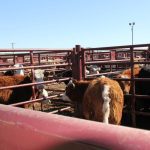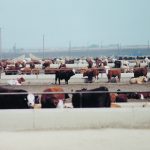Parasitic screwworm flies are pushing northward from Central America again after being officially eradicated from the United States in 1966, threatening $1.8 billion in damage to Texas’ economy alone.
Tag Archives cattle market

U.S. cattle producers fear return of screwworm
In Texas cattle country, ranchers brace for flesh-eating New World screwworms, which haven’t been seen for 50 years

Potential tariff damage to beef remains murky
Tariffs will hurt Canada’s beef sector; how badly is hard to forecast with so many details unknown
Beef market analysts give their best guess on how U.S. tariffs could hit Canadian beef and cattle prices, but market uncertainty leaves a lot up in the air.

Feedlot margins boost feeder cattle market
Feedlots are expected to bid up the price of feeder cattle so that margins in the deferred positions cover variable costs
Glacier FarmMedia – For the week ending Jan. 11, western Canadian feeder cattle prices were up $15-$20 per hundredweight compared to the week ending Dec. 21. In eastern Saskatchewan and Manitoba, quality packages of steers 800 pounds and heavier traded $20-$25 per cwt. higher compared to three weeks earlier. Alberta packers were buying fed cattle […] Read more
Beef producers have risk management options
Weather, feed availability and trade barriers affect markets, making it important to understand what tools are available
Glacier FarmMedia – Cattle prices remain strong in Canada and look to stay that way in 2024. However, the market can change quickly, as producers saw in March when avian influenza was first detected in U.S. dairy cattle. Introduction of risk in a red-hot market affected prices and price insurance. That may have cattle producers […] Read more
Cattle market continues its upward trajectory
Soaring feed costs are offsetting the recent record-setting prices and cutting into livestock producers’ profitability
Canfax executive director Brenna Grant said markets continue on their 2023 tear with a late-May record fed cattle price of $242 per hundredweight. However, feed prices remain high and that affects all proteins.


